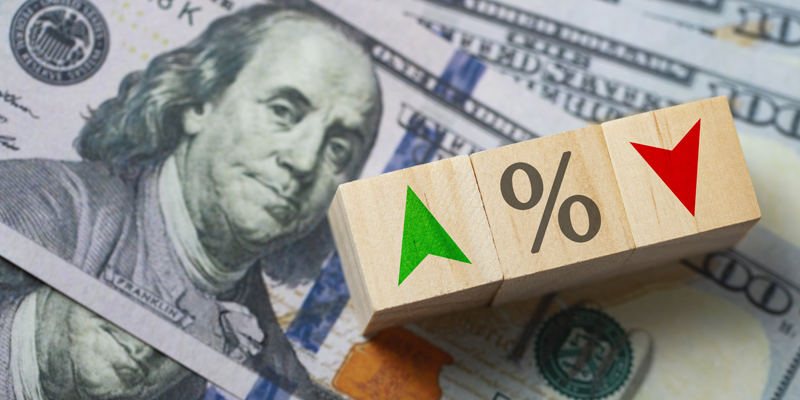
By Dr. Christopher Kuehl and Mr. Keith Prather of Armada Corporate Intelligence
Published: September 12, 2024
Will the Federal Reserve (the Fed) cut interest rates? This question has been at the top of the list for business executives and consumers for months. After a rapid series of rate hikes over the last few years, the Fed has been signaling that inflation concerns may have receded enough to lower rates. It is important to note that this is not a universal opinion within the Fed itself. There are hawks that point out the rate of inflation has indeed slowed but has not fallen to the target 2% rate yet. They also point out that inflation is still being driven by wages and these do not fall quickly. They also worry about the impact of the Red Sea situation and a resulting maritime price surge. The price to move a 40-foot container from Shanghai to Los Angeles has recently risen 182% year-over-year, according to Drewry.
For the sake of argument, let’s assume the Fed lowers rates by a quarter point in September. What can be expected from an economic perspective?
Anticipated Outcome of a Quarter Point Decrease
It generally takes several months for an interest rate change to profoundly affect the economy. The logic behind lowering the interest rate is that the economy is perceived to have slowed. A slower economy gives businesses reason to be cautious. There may be projects that have been on hold pending a rate cut and despite a rate cut, there will still be reasons to wait. The perception is that banks and other lenders will immediately reduce rates but there is usually a delay. It is also assumed there will be a rush of loan activity, but lowered interest rates also generally means that lenders become more cautious. The motivations for a large company to borrow typically include an expansion effort, an acquisition or merger, or some kind of financial restructuring. These are not decisions that depend exclusively on interest rates.
For consumers, the reduced interest rates will presumably mean reduced mortgage rates, car loan rates, and other reductions (such as credit cards). These rates are not automatically tied to the Fed Funds Effective Rate and changes take place at differing paces. Mortgage rates are often more closely tied to activity in the long-term bond market. Overall consumer reactions to lower interest rates are slower than reactions to higher rates. Lowering rates has been compared to pushing a string while raising them is like pulling a string – one is a lot more responsive than the other.
The biggest impact will be in the investment community as it signals a shift in central bank thinking (typically a cascading wave of further cuts will follow). There will be stocks that will respond to easier access to money and the subsequent growth that follows. The investor’s assumption is that expansion will increase – and bring with it more acquisitions and merger activity. Delayed projects will resume and generally consumers will soon see an easier credit environment.
At the same time, a rate reduction is typically tied to a slightly weaker dollar as there will be less incentive to invest in the U.S. This will likely be minor in this cycle because many other major central banks have already lowered their rates or are planning to. The U.S. dollar will remain strong on a historical basis (despite coming off of the June peak, according to the US Dollar Index); which is good for reducing import prices but is not generally supportive for the export community. The U.S. is unable to promote exports with a weaker dollar as most of the world pegs their currency to the greenback. If it drops in value, other currencies soon follow, and the U.S. gets no long-term advantage from a weaker dollar.
Once the rates start to come down, the next question will be: when will they come down again and by how much? What is the longer-term goal?
The consensus is that another rate cut will arrive in December, after the initial cut in September, and that it will be another quarter point. A look at the latest Fed “dot plot” (a Federal Reserve chart that records each Fed official's projection for the bank's key short-term interest rate) suggests that there is a Fed goal to get the effective interest rate to between 3.5% and 4.0% by the end of 2025, which will involve reducing rates by 1.5 to 2 points by the end of 2025 – lowering the Fed Funds Rate from 5.5% to 3.5%/4.0%. The timing at this stage appears to be slow and measured. To reach this goal there would need to be a first cut in September 2024 by a quarter point, followed by a quarter point cut in December 2024. Then, in 2025, there would need to be four more quarter point cuts by the end of the year (generally one each quarter).
Strategy Altering Factors
There are three factors that may alter the Fed’s strategy. Two of them will speed up the rate reductions and one will slow the pace.
The first factor to accelerate a rate reduction is a strong reaction in the labor market. The rate of unemployment is currently 4.3% and that remains historically low. It has, however, risen from 3.8% a few months ago. If there is a continued increase in the jobless rate and layoffs start to accelerate, the Fed may elect to boost its rate cutting pace. The other factor that will alter their stance is slower GDP growth. The latest estimate from the Atlanta Fed’s GDPNow holds that Q3 will grow at 2.5%. If these numbers hold, the Fed will not have a reason to speed things up, but if GDP data falls to 1.0% or below, interest rates may be pushed down further and faster.
The factor that will cause the Fed to slow down the pace of rate cuts is a surge in inflation. Right now, the rate of inflation is very close to the Fed’s stated goal of 2.0% but the hawks at the Fed point out that the drivers of inflation now are labor wages and a recent surge in the cost of transportation. It is the labor market that concerns them the most as wages are sticky – they do not come down as quickly as they rise. The chronic labor shortage means that skilled workers have more leverage than in the past, and that tends to drive inflation higher.
Actions by the Fed can have sweeping impacts on the U.S. economy. As the U.S. economy enters a new cycle of Fed action, reactions in the economy will be interesting and worth watching.
About the Authors
Dr. Christopher Kuehl and Keith Prather are founders and managing directors of Armada Corporate Intelligence. Dr. Kuehl holds a Ph.D in Political Economics and Master’s Degrees in Soviet Studies and East Asian Studies. He works with a wide variety of corporate clients around the world and is the economist for several national and international organizations. Mr. Prather has been providing corporations with market intelligence and analysis covering domestic and global economics, geopolitics, raw material and supply chain developments, environmental impacts and other factors that affect the corporate operating environment for more than 22 years.
Disclosure and Important Considerations
This communication is provided for informational purposes only. The opinions expressed herein are those of the authors and do not necessarily represent the opinions of CrossFirst Bankshares Inc. or CrossFirst Bank. This communication references certain data and statistical information, which has been obtained from various independent, third-party sources and publications. The information is believed to be reliable as of the date of this communication, but we have not independently verified the information and do not warrant its completeness or accuracy. CrossFirst Bankshares Inc. and CrossFirst Bank are not liable for any errors, omissions, or misstatements. You should not use this information as a substitute for your own judgment, and you should consult professional advisors before making any tax, legal, financial planning, or investment decisions. This communication contains no investment recommendations, and you should not interpret the statements in this report as investment, tax, legal, or financial planning advice. This is not an offer or solicitation for the purchase or sale of any financial instrument.
Business
September 12, 2024 by CrossFirst Bank

